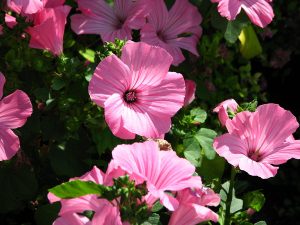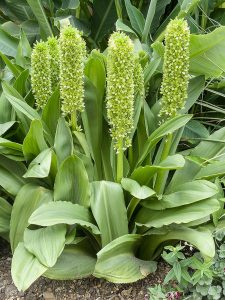The Question You Often Hear: What is a Hardiness Zone?
The plant hardiness zone map is the standard by which gardeners and growers can determine which plants are most likely to thrive at a location. It’s a geographic area defined to encompass a certain range of climatic conditions relevant to plant growth and survival. The map divides the United States into 11 separate hardiness zones.
Gardening Map and Climate Hardiness Zone Map
You’re in love with Achillea millefolium (commonly known as “Cameo”). Its pink touch of delicate lace adds beauty to almost any setting. It is both drought and deer-tolerant. You would like to cover your yard with this stuff. You can! According to the USDA, they grow in Plant Hardiness Zone 3. That’s you in lovely Bigfork, Minnesota.
Unfortunately, horticultural headaches may be in your future. Cameo grows in Zones 3-10. You may be guilty of what Better Homes and Gardens calls “zone edge gardening.”
Gardeners who are successful year after year have this to say about zone edge gardening. It can be done, but it is better to save “edgy” for shoe manufacturers and musicians under the age of 25. An edge is a difficult place in which to successfully plant and nurture growing entities. The most successful gardens on your block are filled with flowers toward the middle of the hardiness zone in which you live.
Here are some plants, flowers, and trees that will work best in your region, and based on the hardiness zone, you can grow. Some other suggestions for the spring and summer months will ensure your garden looks good!

Lavatera trimestris, or “Pink Blush”
Hardiness Zone 3
Remember our friend in Bigfork, Minnesota? She wanted to plant Cameo in the worst way. Unfortunately, Cameo is an edging plant in Zone 3b. She would be better off planting Lavatera trimestris, or “Pink Blush.” It has masses of 3-inch, pink-blushed, flowers that resemble Hibiscus from early Summer to the first frost. The White Spruce tree is a good choice for Zone Three.
The summer is short in Portage, but welcomed with open arms, nonetheless. People are hilling potatoes and carrots this summer month to keep the parts underground healthy and growing. Deep watering needs to take place. Too many gardeners make the mistake of watering frequently, but lightly. Give the green and growing things plenty of water, and water again if an inch of rain doesn’t fall in the next week. Don’t forget that summer is the mulching season! It’s so important as a part of your gardening routine.
Hardiness Zone 4
Examples include Laramie, Wyo., Stevens Point, Wis., and Penobscot, Maine. Aquilegia caerulea or Rocky Mountain Columbine is a good choice. An edge pick would be Asclepias syriaca, or “Virginia Silk.” Our tree of choice for Zone Four would be the Sugar Maple.
Things are warming up and quickly in Stevens Point. Almost every evening you’ll find gardeners gathering at the Rock and Roll cafe down on Stanley Street swapping mulch and pest control stories. They can’t stay out too late, though, because summer is important to be out in the yard. July is the perfect Zone Four month to grow a second planting of green beans and squash. Gardeners are all about looking ahead, so you can begin to prepare for your fall garden by transplanting broccoli, cabbage, and cauliflower.
Hardiness Zone 5
Examples include Fort Collins, Colo., Davenport, Iowa, and Ithaca, NY. The Bellevalia pyracantha, or “Giant Grape Hyacinth” is a fine and abundantly fragrant choice for this region. An edge pick would be the Roxanne Geranium. Consider the Quaking Aspen tree.
Quiet days and nights are the order of the day in Boulder. The city is taking a respite before the onslaught of kids coming back to CU for the fall term. People are having a bite at the Village Coffee Shop, talking about succession planting our dill crop. That way, they will not have too much at any one time. Planting some peas will grow well here in the Boulder area.
Hardiness Zone 6
Examples include Wichita, Kan., Belleville, Ill., and Harrisburg, Penn. The ornamental grass Deschampia caespitosa, or “Northern Lights,” is an excellent choice, but there are a lot of choices in this climate. The “Clematis,” and the “Pincushion Flower,” are also excellent choices. Zone Six is the beginning of some verdant growing conditions as the weather gets warmer. The Helleborus orientalis, or “Berry Swirl” would be considered a little on the edgy side. The Japanese Flowering Cherry tree is a Zone Six favorite.
The tourism season is alive and well in Dayton. Lots of folks here to see the bicycle shop where Orville and Wilbur Wright worked and perfected their plane. You know, they only went to Kitty Hawk for the winds. Dayton boys, those Wrights, and we’re mighty proud of them. We’re also mighty proud of the crops we harvest, and that’s an everyday thing in July. Also, in hardiness zone 6 you should be planting carrots, kale, beets, chard, and peas for a fall harvest. This should help to give you a jump start on a fall garden.
Hardiness Zone 7
Examples include Walla Walla, Wash., McAlester, Okla., and Raleigh, N.C. The Aquilegia vulgaris, or “Black Barlow” is a striking and relatively unusual choice for this part of the world. For a splashier color consider the Dianthus plumarius, or “Thea Mary.” The Fragaria vesca ssp. californica, or “Woodland Strawberry” is a problematic edge selection. The Japanese Red Maple is a good Zone Seven tree selection.
Out here in Jackson, we like three things, namely country music, Elvis, and the Great July Potato Harvest. But, there is more to July in Hardiness Zone 7 than potatoes. We’re harvesting other vegetables, and canning a good portion of the harvest for some warm soups and stews come winter.
Hardiness Zone 8
Salem, Ore., Austin, Texas, and Columbia, South Carolina have a couple of things in common. They are all State Capitals. They are all a part of the large and soil/weather forgiving Hardiness Zone 8 family. Clarkia concinna, or “Pink Ribbons,” are a great choice. So are Helleborus orientalis, or “Peach Blush.” The Abutilon striatum, or “Redvein Indian Mallow” would be an edge selection, so better consider a Pink Dogwood tree.
The town of Dunsmuir is fairly popping this summer months. The July 4th fireworks are part of the reason, of course, but so are the gardens as they give up the fruits of our labor. But, don’t forget to look ahead! July is when you sow pumpkin seeds in your garden to have a fall harvest. Mulching is also an important task during summertime.

Eucomis pallid flora, or “Giant Pineapple Lily”
Hardiness Zone 9
Remember when we were kids and played the “getting cold/getting hot” game? Hardiness Zone 9 is “getting hot.” Examples include Casa Grande, Ariz., McAllen, Texas, and Kissimmee, Fla. Remember that Redvein Indian Mallow that was an edge pick in Zone Eight? It’s a good one in Zone Nine. We also suggest the Eucomis pallid flora, or “Giant Pineapple Lily”, and the Heuchera “Marmalade.” The Aeonium “Garnet” is a choice on the edgy side. Consider the majestic Baldcypree tree.
It isn’t all that hot in Fort Bragg, and we like it that way. But, Fort Bragg is still a Hardiness Zone 9 town because of the warm winter temperatures. Freezing, you say? We call 44 degrees freezing. People are harvesting fruit as fast as they can, because of the flying and crawling things that like them, too. Summertime is also a great time to spread compost over areas you are planning on utilizing for a fall garden.
Hardiness Zone 10
Much of the Los Angeles Basin, San Diego, and Naples, Fla are in Zone Ten. The cities in southern California and south Florida are Hardiness Zone 11. The Abutilon hybridum, or “Victorian Lady,” is an excellent choice. So is the Agave stricta, or “Hedgehog Agave.” The “Orange Hot Lava,” albeit beautiful, is an edge flower for this region. Consider the Jacaranda for your tree.
Aloha, from the folks in Hana. The gardeners out here are up with the sun to get their chores complete before the sun is too high in the sky. Luckily, the tradewinds keep us from suffocating but it is warm nonetheless. July is the perfect time to start our seeds for okra, collards, tomatoes, peas, and eggplant.
The Hardiness Zone, or Gardening Map, or Climate Zone Map, are all designed to make your gardening meaningful and easier, so you can get the best results of your hard work.




